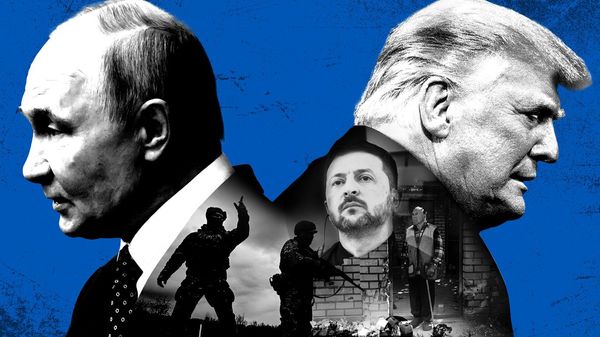
The first national project to record mass killings on the Australian frontier has found that around half of all massacres of Aboriginal people were carried out by police and other government forces. Many others were perpetrated by settlers acting with tacit approval of the state.
The final findings of the eight-year long Colonial Frontier Massacres Digital Map Project show that conflict was widespread and most massacres were planned, in a deliberate attempt to eradicate Aboriginal people and Aboriginal resistance to the colonisation of the country.
Researchers have added 113 sites, mostly from Western Australia and the Northern Territory, in the final stage of the project. There are now 415 sites on the map, each representing a place where six or more people were killed.
The most common excuse for a massacre was as a reprisal for the killing a colonist, and the number of people killed was heavily disproportionate. The death of one colonist could result in police-led revenge expeditions that lasted weeks or months. Researchers found that attacks on settlers, while often referred to in historical documents as the reason for a killing, often took place after the alleged “killing of Aboriginal or Torres Strait Islander people, abduction and sexual abuse of women, or livestock’s use of hunting grounds and water”.
While numbers should be considered to be indicative rather than exact, the difference in casualties is stark.
In an analysis by Guardian Australia based on the data, Aboriginal deaths were estimated to be 27 to 33 times higher than coloniser deaths. Between 11,000 and 14,000 Aboriginal people died, compared with only 399 to 440 colonisers.
The tallies of the dead are not the only measure of what took place, according to Dr Bill Pascoe, a digital humanities specialist and key researcher on the project.
“We are always using conservative estimates,” Pascoe said. “We want to make sure it can stand up to any kind of criticism that might be thrown at it. We don’t want to be accused of overinflating figures.
“Another one of the challenges is objectification. White research objectifies Indigenous people, it’s a big problem, and numbers tend to objectify. So it’s easy just to say 11,000 people [were] killed, and carry on with the next news item … so, one of the main challenges [has been], how can I work against that?”
Pascoe said narratives were “one of the most important” parts of the map because they gave a more personal account of events.
“[It] helps you think about those people and what they were going through, and some of it is really horrific. Then you add that up, that scale of terror, and for the survivors living after it, and you multiply that by 11,000.”
Massacres classified as “opportunity” were the second most common. Most of these attacks were planned, not random clashes, and many had government involvement or were carried out in the knowledge that there would be no formal repercussions.
A significant number of massacres took place to “teach the natives a lesson” after the theft of livestock – evidence of the conflict over land, water and resources between settlers and the Aboriginal people they were systematically displacing.
Most massacres perpetrated by stockmen and settlers were found in the Northern Territory.
Emeritus professor Lyndall Ryan, who led the project, said that stockmen in the NT commonly operated under the orders of big pastoral companies.
“Particularly after 1860, it is becoming clear that most of the massacres are being conducted by employees of major companies who are bankrolling these big pastoral leases, or mining leases,” Ryan said.
“These companies have more money to arm their employees with good firearms to go out and do their work. It’s not the small selector who’s killing Aboriginal people, it’s these big companies who have experienced overseers, experienced stockmen, to patrol and contain the Aboriginal people.”
Massacres after 1890 tended to be carried out over longer periods across broader areas, the researchers found. Ryan described these as “genocidal massacres”.
“The code of silence really made it very hard for people to speak. [But] I think a lot of people knew what was going on,” Ryan said.
“The newspapers have been an extraordinary source of evidence. What is most interesting about the newspapers is people from northern Australia … would write to the Argus or the Age or [other metropolitan papers] and tell them what was going on. So people in Melbourne knew what was going on.
“And the reason why these people from north Queensland will write into the papers in Sydney and Melbourne and Adelaide, is because there were companies based in Melbourne that were bankrolling either mining companies, or pastoral companies in northern Australia.
“And so these people who are writing are often employees of those companies. It’s as if they’re reporting to their superiors what is going on.”
Researchers said although the project was complete, there was much more work to be done. Pascoe said he hoped the map would continue to be a reliable resource to “inform public debate”.
“That’s an important role for academia, generally, to be a reliable source of information that’s been through some sort of rigorous methodology,” he said. “The intention [is] to present a clearer and an accurate picture of what we can be confident of.”
The Killing Times is based on data from the Colonial Frontier Massacres Digital Map Project led by Prof Lyndall Ryan at the University of Newcastle’s Centre for the 21st Century Humanities.
For more information about the analysis conducted by Guardian Australia and the research methods of the University of Newcastle’s colonial frontier massacres research team, please read the “About” section here.
In Australia, the crisis support service Lifeline is on 13 11 14. In the UK Samaritans can be contacted on 116 123. In the US, the National Suicide Prevention Lifeline is 1-800-273-8255. Other international suicide helplines can be found at befrienders.org







